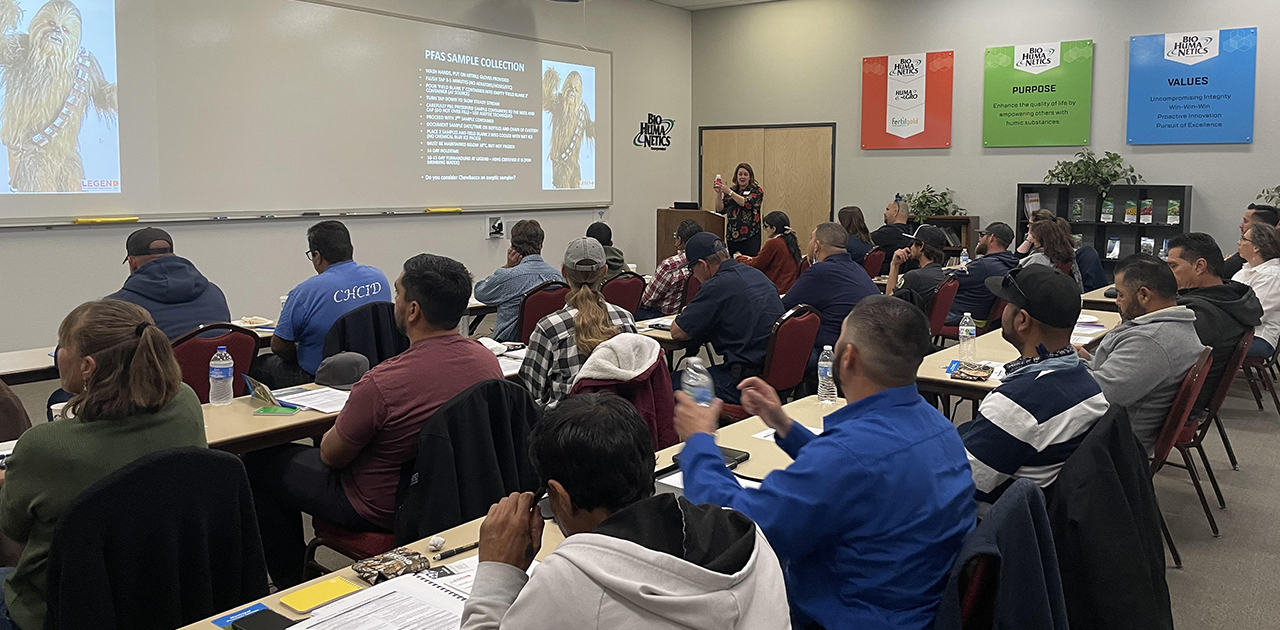
Speakers at the event included Heather Jennings, PE, Director of Probiotic Solutions®, Cathy Swanson, West Regional Sales Manager and Groundwater Remediation Specialist at Purolite, and Marci Payne, Sales and Marketing Director at Legend Technical Services of Arizona. An Operator’s panel discussion was led by Jim Huchel, Wastewater Treatment Manager for the City of Flagstaff, and Henry Cornejo, Wastewater Treatment Program Manager at Rural Water Association of Arizona. Professional Development Hours were awarded to the 27 attendees.
According to the U.S. Environmental Protection Agency (EPA), PFAS are widely used, long lasting manufactured chemicals, components of which break down very slowly over time. Because of their widespread use and their persistence in the environment, many PFAS are found in the blood of people and animals all over the world and are present at low levels in water and a variety of food products. Scientific studies have shown that exposure to PFAS may be linked to a variety of harmful health effects in humans and animals.
Related Posts

Introducing New Humic Conversations Video Series
We are excited to introduce our new educational project, the Humic Conversations Video Series. As the name suggests, each episode of the series will focus on humic substances. Two leading researchers from our Humic Research Lab. Dr. Rich Lamar and Dr. Hiarhi Monda will share their expertise with the viewers. In Episode 1 of this

Reaching Crop Milestones
Raising a crop takes more than seed and soil—it takes faith. Just like raising kids, farming is full of stages that bring joy, stress, hope, and awe. From emergence to canopy and tasseling to harvest, each milestone tells a story of patience, persistence, and purpose. Here’s a look at the defining stages that make farming not just a job, but a calling.

Cherry Blossoms: A Sight to See
Cherry Blossoms: A Sight to See! Konnichiwa! This Week in Ag comes to you this week from Japan. I’m here for my son’s wedding. My new daughter chose this time of year to align with the famous blooming of the cherry blossoms. These Sakura trees provide amazing backdrops for wedding photos. You may have heard about Japan’s cherry blossoms and perhaps seen pictures online or on travel shows. But let me be clear: these do not do the flowers justice. The sights are awe-inspiring. Gardens, parks, temples, river banks and streets lined with Sakura trees provide spectacularly scenic backdrops. Pedals blow in the wind like gentle snowfall. A unique feature of some Sakura trees is their ability to bloom before leaves emerge, which further emphasizes the flowers.

